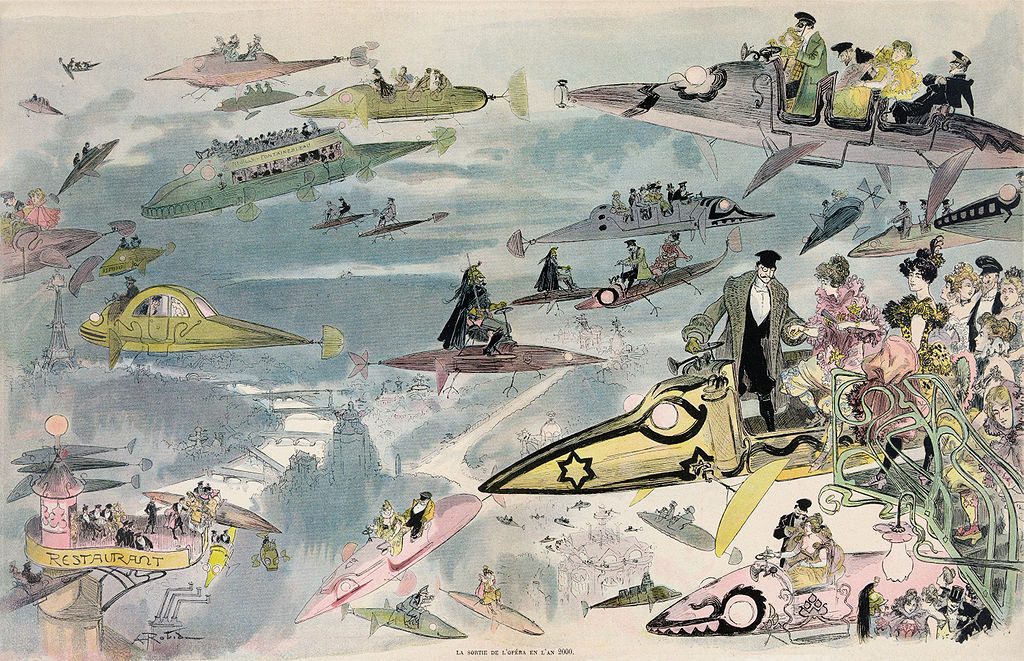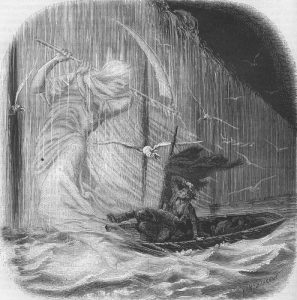
PHOTO: wikimedia
Last time on the History of Science Fiction, we covered the 18th and 19th centuries– which were truly historic for the genre. It all began with Mary Shelley’s work Frankenstein, and the period was dominated by the likes of Jules Verne and the famous H.G. Wells and his War of the Worlds.
This time, we’ll be introducing the late 19th proto-science fiction, and the pre-pulp science fiction that paved the way for SF as we know it in the 20th century. The reigning literary movement of the late 19th and early 20th century was realism, or, the literary trend toward painting a picture of contemporary life and society just as it was, no sugar-coating. Authors tended toward grim reality, than anything else. This is probably best portrayed in Stephen Crane’s famous story The Open Boat.
Science Fiction and Literary Realism
While science fiction, at its heart, cannot be traditionally “realist”, as it’s depicting events and settings and sometimes characters, even, that are fantastical, the stretching of our suspension of belief, and the exploration of what might be possible with scientific achievement, the SF of this period in history still reflected the literary realism movement of the 19th century.
Science fiction has always sought to explain the meaning of life and humanity’s place in the universe, but the writers of the 19th century adopted a page out of the realism movement’s book and began to lean more toward social commentary and interpreting society. They were creating, if you will, a more real picture of society through fantastical fiction’s metaphors than you might ever be comfortable with finding in something written by Dostoyevsky or Stephen Crane.
Sir Arthur Conan Doyle, Kipling, and Edgar Allen Poe
Most people know Sir Arthur Conan Doyle as the author of the famous Sherlock Holmes, but did you know he also wrote science fiction? The tales of his Professor Challenger display elements of SciFi. Rudyard Kipling, too, made contributions to the genre that have caused some to label him as the “first modern science fiction novelist”.
But, perhaps one of the best examples of literary realism invading the genre of science fiction is found in The Narrative of Arthur Gordon Pym of Nantucket, the only complete novel written by Edgar Allen Poe. The work defies a universal interpretation. It’s part autobiographical work of Poe’s own times at sea, part fictional travel log, part fantasy, part social commentary, and part science fiction.

PHOTO: wikimedia
In the final parts of the book, chasms open up and a figure appears, a figure that may, possibly, be from a different, futuristic civilization living inside the center of the earth. The book draws on the famous Hollow Earth theory, and also details whole species of imaginative yet-to-be-discovered flora and fauna. It’s strangely reminiscent of works by Jules Verne, especially, in its detail and writing style.
Now, you’re probably wondering where literary realism comes in to this. Well, literary realism was a movement that liked to touch on the grosser parts of life that other literature might leave out. It was an intense backlash to the Romantic movement of earlier decades. The Narrative of Arthur Gordon Pym of Nantucket delves into the darkness of a voyage at sea. Storms break apart the ship, revealing just how helpless the sailors are against nature. He describes in detail a corpse rotting on the deck of the ship, and the sailors debate among themselves about whether or not they should cannibalize each other or starve to death – a reality of many early castaway stories that most people would rather overlook.
Edgar Allen Poe is often referred to alongside Jules Verne and Wells as one of the founders of science fiction, even though, originally his works were never labeled as such.
Other Notable 19th and Early 20th Century Works
In 1894, Will Harben published “Land of the Changing Sun”. A book that builds on the popular Hollow Earth theory, detailing a dystopian society that thrived at the center of the Earths’ core, living beneath the light of a massive mechanical sun.
Other famous authors who also wrote works that can be labeled as science fiction include: Mark Twain, who wrote of “transmigration of souls”, time travel, and advanced warfare and tactics; and L. Frank Baum and the Wizard of Oz; Jack London, who wrote several short stories that involved extraterrestrials, biochemical warfare, and ethnic cleansing.
As literature began to evolve, as crime fiction, adventure stories, horror, and fantasy began to be published in pulp magazines, the world would see science fiction shift, too, into this new and lucrative genre. We’ll be covering the evolution of pulp science fiction next time.

